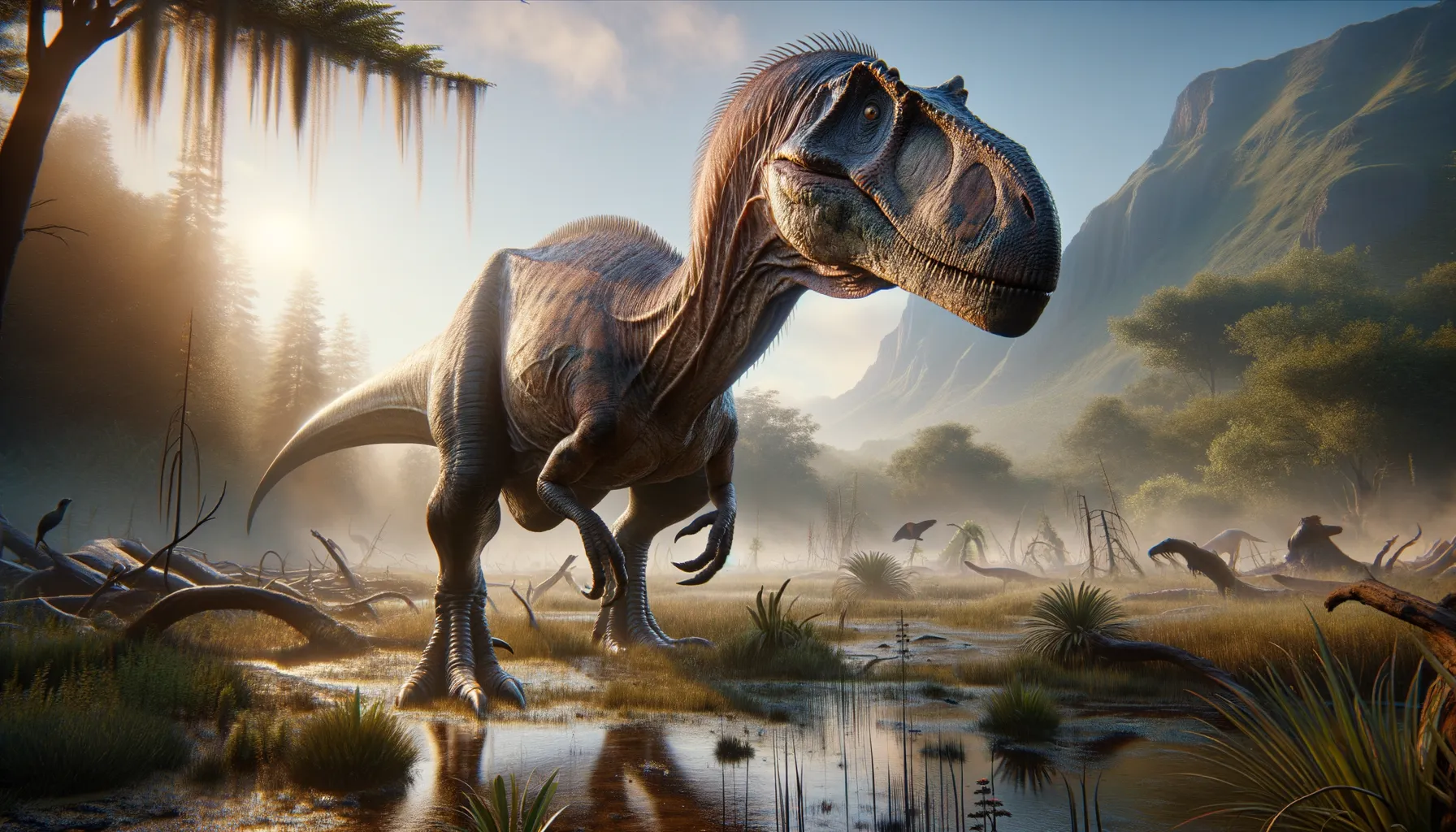
Deinocheirus
The giant with surprising features!
Period
Cretaceous
Length
Around 11 meters long.
Height
Approximately 5 meters at the hips.
Weight
Estimated around 6,000 kg.
Deinocheirus was an unusual, large theropod dinosaur known for its gigantic arms and unique physical traits. Initially baffling scientists with pieces of fossils, further discoveries revealed that it had a duck-bill-like snout, a hump on its back, and enormous claws. It lived during the Cretaceous period and has been reconstructed as an omnivore, browsing for plants and possibly indulging in small aquatic creatures in its marshy habitats.
Diet
Deinocheirus was an omnivore, feeding on a mix of plants and animals. Fossil evidence suggests it primarily consumed plant material, but it may have also eaten fish and other small aquatic creatures. This varied diet was crucial for sustaining its large size.
Hunting
Deinocheirus likely used its large claws to gather vegetation and possibly catch aquatic prey. Its hunting behavior was not aggressive; rather, it foraged in marshy areas for food. Its long arms and claws made it a proficient gatherer rather than a hunter.
Environmental challenges
The environment of Deinocheirus was likely dominated by large and fierce predators, which required it to be cautious despite its size. Seasonal changes in marsh and river systems meant dealing with varying food availability. Floods and droughts could have impacted Deinocheirus’s ability to feed consistently. These factors made its diverse diet an asset as it navigated these challenges.
Speed
Considered slow due to its massive size.
Lifespan
Possibly several decades.
First discovery
First discovered in Mongolia in 1965.
Fun Facts
- Deinocheirus was a gigantic dinosaur known for having some of the longest arms of any theropod, measuring up to about 8 feet long.
- Despite its large size and fearsome arms, Deinocheirus was likely an omnivore, eating a mix of plants and small animals.
- The first fossils of Deinocheirus were discovered in the 1960s in Mongolia, but it wasn't until 2014 that more complete specimens were found, revealing its unique appearance.
- 'Deinocheirus' means 'terrible hand' in Greek, a name inspired by its massive claws.
- Unlike many theropods, Deinocheirus had a duckbill-like snout, which suggests it might have fed in water-rich environments.
- Fossils of Deinocheirus show that it had a camel-like appearance, with a large hump on its back formed by tall vertebrae.
- This dinosaur had a mixture of features from different dinosaur groups, making it difficult to classify for many years.
Growth and Development
Like many large dinosaurs, Deinocheirus experienced rapid growth during its early years. Its extended size required considerable resources, necessitating a period of intense feeding. As an adult, its growth would have slowed, allowing it more energy to invest in reproduction and defending territory. This growth pattern helped it maximize survival and reproductive success.
Habitat
Deinocheirus lived in the wetlands of what is now Mongolia, around river deltas and marshes. Its environment was lush and semi-aquatic, teeming with vegetation and water sources. Such habitats provided plentiful food options, supporting Deinocheirus’s hefty dietary needs. The dense foliage also offered some protection from predators.
Interaction with other species
Deinocheirus coexisted with various other dinosaurs, including large carnivores, which may have posed a threat. Its formidable size, however, deterred many potential threats. It likely competed with other herbivorous dinosaurs for plant resources. Social behaviors with its kind are less understood, but its solitary foraging habits suggest limited social interaction.
Natural lifespan
Deinocheirus likely lived several decades if it survived to maturity.
Reproduction
Deinocheirus, like other theropods, likely laid eggs in nests made in sandy or vegetated areas. Fossils of related species suggest that it might have engaged in some level of nest-guarding or caregiving. Nesting colonies would have provided some protection against predators, ensuring higher survival rates for the young.
Social behaviour
Deinocheirus may have been a relatively solitary creature, focusing on feeding to meet its massive dietary demands. While there is little evidence of complex social behavior, it may have interacted with others of its kind during the breeding season. Its solitary nature would have reduced competition for resources.
Fossil locations
Fossils of Deinocheirus have predominantly been found in Mongolia’s Gobi Desert, a well-known site for many dinosaur discoveries. The initial find in 1965 was partial, leading to initial misinterpretations of its anatomy. Subsequent discoveries have offered a more complete picture, providing insights into its unique features and lifestyle.
